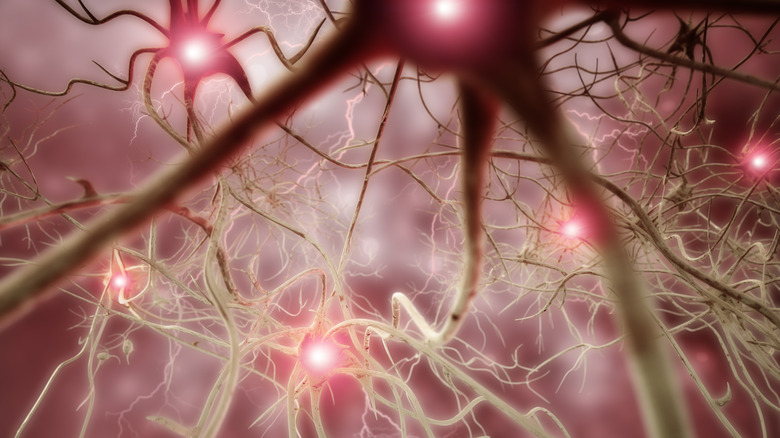The Creepy Reason People Remain Conscious After Being Decapitated
The idea of decapitation, or the chopping off of one's head, is viscerally repugnant. It's so final. There is no fix. What's more, there is something about severing the thought center, or consciousness, from the rest of the body that has a certain cruelty to it.
However, when Dr. Joseph-Ignace Guillotin presented the French government with the idea for his decapitation machine, he sold it on the promise that it was a more humane way to cut off the head of someone sentenced to death than the commonly used method of using an ax or sword, according to History. To be sure, decapitations were nothing new when guillotines became the new and improved way to remove a head from a human body, but it did become the cleanest and swiftest way to do that horrible deed starting in 1792 when the first guillotine was tried out on a person. In fact, according to History, watching the guillotine come down on some unlucky soul became a spectator sport, of a sort, complete with souvenir shops and eateries ready to feed the crowds that came to watch.
But spectators may not have been the only ones watching. Research has shown that it's very likely that those killed by decapitation maintain consciousness for anywhere from four to 30 seconds, depending on various observations. The reason for that, according to the website, how stuff works, is just because we've lost our heads, it doesn't mean the electrical activity in our brains stops immediately.
Researchers measured brainwaves in decapitated rats
Where human decapitation is concerned, there are anecdotal stories involving severed heads that seemed to respond to stimulus. The Conversation reported that, in 1905, a curious French doctor experimented at an execution by calling out an executed man's name right after his head fell into a basket.
The doctor wrote, "I saw the eyelids slowly lift up, without any spasmodic contractions — I insist advisedly on this peculiarity — but with an even movement, quite distinct and normal, such as happens in everyday life, with people awakened or torn from their thoughts."
Discover Magazine reported that the same physician estimated that a human severed head could stay conscious for 25 to 30 seconds. A couple of hundred years before that, a showy executioner had made a spectacle of holding up the severed head of a young woman who had killed a revolutionary leader in France by slapping her cheeks. Spectators claimed that the woman's facial expression changed to one of anger, per Discover.
There isn't a lot of opportunity to really study this phenomenon in humans — that would be frowned upon. However, scientists have experimented with decapitating rats while recording their brain waves via electroencephalography (EEG). According to the findings by researchers at Radboud University Nijmegen in the Netherlands, there is brain activity for several moments after the head is cut off from the body. "Consciousness is likely to vanish within some seconds after decapitation," they wrote.
Brain activity after clinical death
A similar study undertaken in New Zealand involving decapitating rats and monitoring the brain activity that followed using EEG monitors came to a similar conclusion: decapitated creatures remain conscious for several seconds after the head has been removed, and are likely aware of the sensations of physical pain resulting from the fall of the guillotine. However, most experts claim that it is unlikely that anecdotal stories from throughout history that tell of severed heads frowning, speaking, or reacting to stimuli are true. More likely, the facial movements are the result of involuntary muscle twitching due to the misfiring of neurons in the guillotined brain.
The human brain is fuelled by oxygen, using up around 20% of the oxygen taken in through inhalation. At the point at which the blade of the guillotine strikes the neck, the brain is still full of oxygenated blood, which, it is believed, would keep consciousness intact until the organ begins to drain its blood, a process known as exsanguination. In the case of decapitation, the moment the brain becomes deprived of oxygenated blood is when the brain loses consciousness, with death beginning on a cellular level immediately after.
However, though consciousness may only persist for a few seconds, activity in the brain continues for far longer — possibly many hours. As brain expert Adam Taylor writes in The Independent, research shows that the brain releases delta waves — those typically released during sleep — up to 30 minutes after the brain has been deprived of oxygen, while brain activity, in general, has been detected in "other organisms" as late at 96 hours after clinical death.


